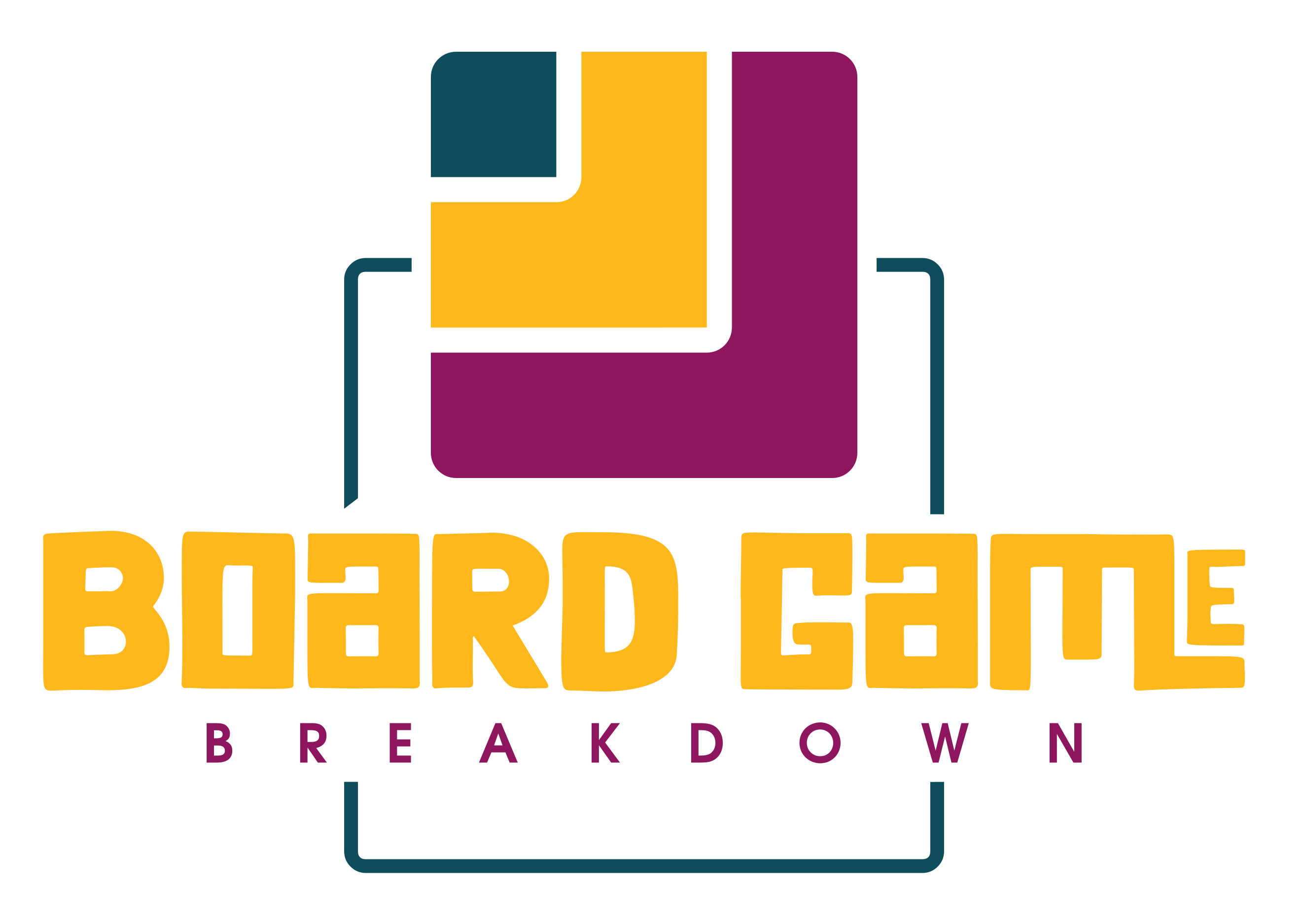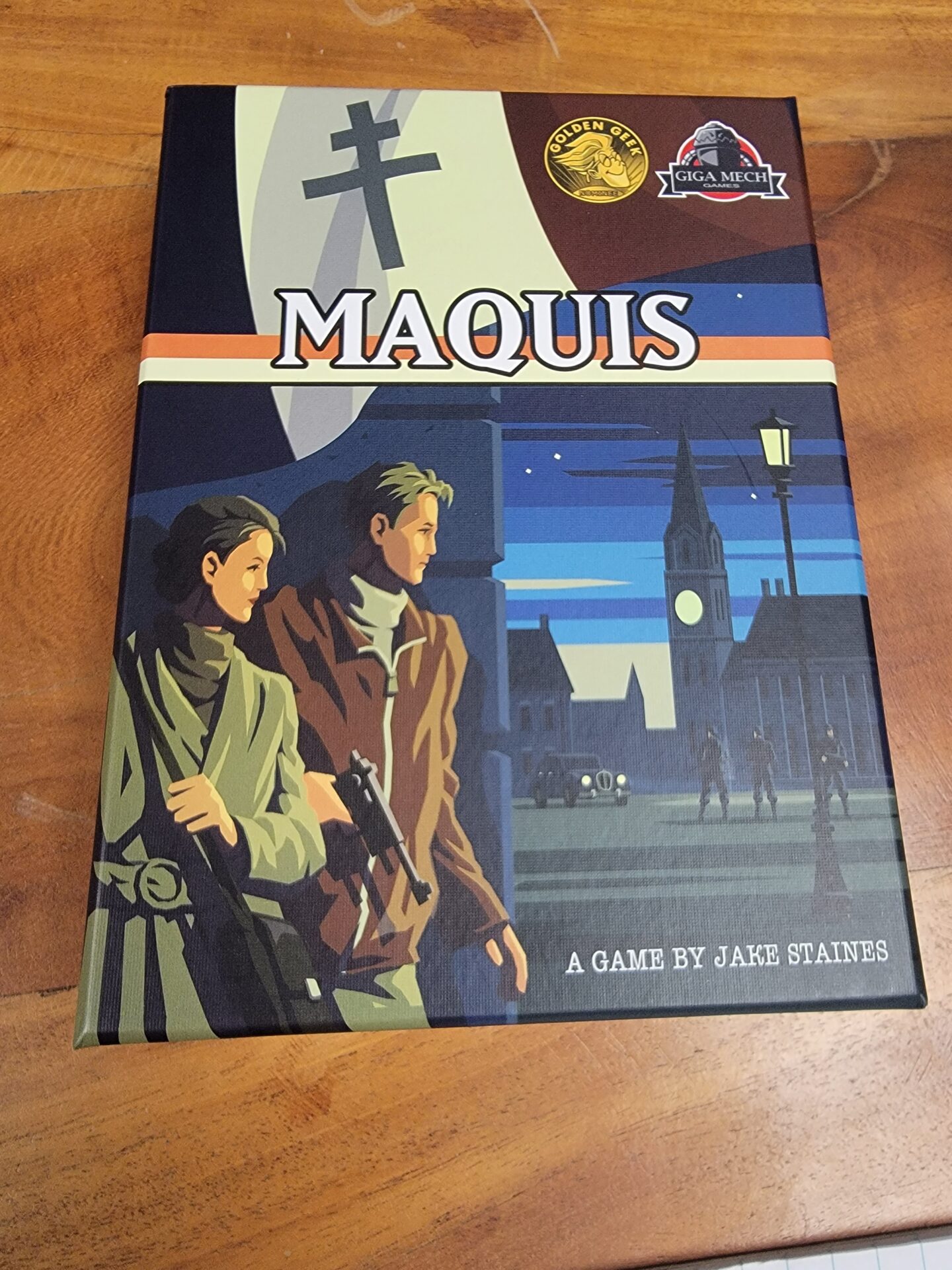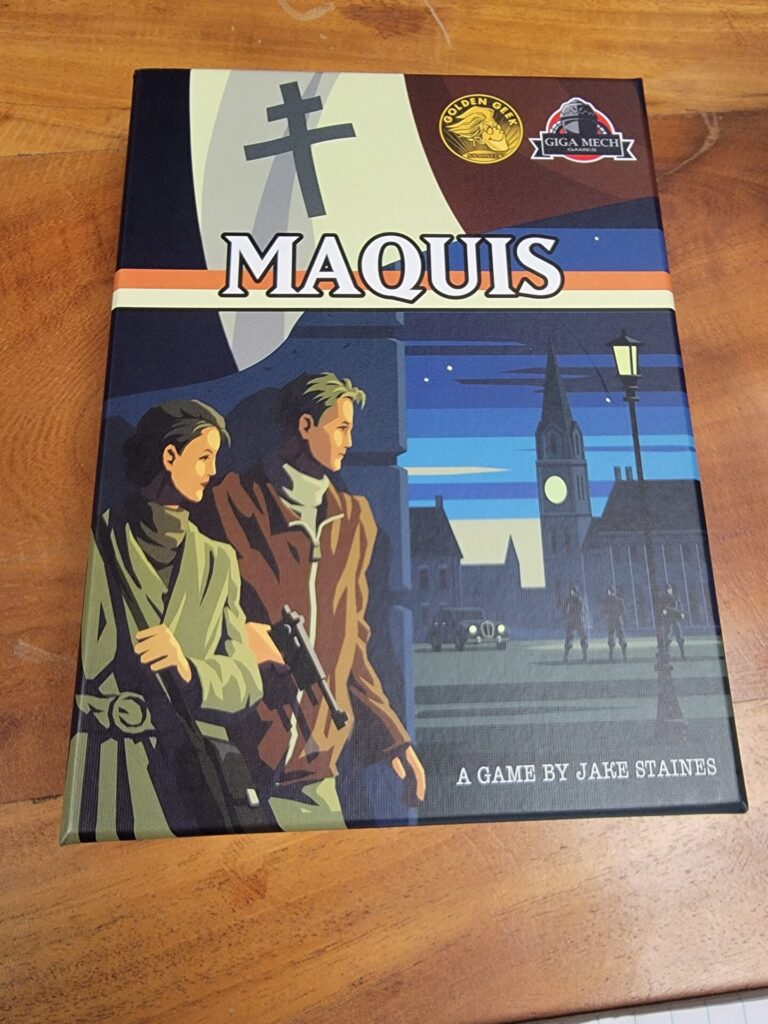
Name: Maquis
Year of Release: 2013
Player Count: 1
Playing Time: 30 Minutes
Designer: Jake Staines
Publisher: Giga Mech Games
Primary Mechanisms: Solitaire Game, Worker Placement
Weight (According to BGG.com): 2.17
Overview
Growing up, the World Wars were of particular interest to me, especially when it came as a subject to read about. While I dabbled in non-fiction works occasionally, this was probably in my middle school years, so a lot of that seemed boring to me. Historical fiction was a different story though. I was able to get the factual background of that time period with the fast-paced action of my favorite thrillers.
A friend from work recently mentioned that I should try out Maquis, a solo-only game that I had never heard of. Earlier this year, the same friend let me borrow Under Falling Skies which was a huge success in my opinion, so I was excited to see what Maquis was all about. Learning it was themed around sabotaging some Nazi sympathizers only added to my curiosity as I sat down, opened the box, and got started on my first game.
Let’s see what Maquis is all about.
Rulebook & Components
Judging Maquis by its box size, you might think the game is solely a card game, but you’d be mistaken. In the small-ish box, players will receive a board, multiple types of cardboard chits and tiles, numerous wooden meeples and cubes, as well as a deck of cards. This was the first real surprise for me as I unpacked it, as I wasn’t sure what this little box would hold. The style of artwork on the components is fantastic, and gives off the perfect vibe for a “spy” game. Specifically, I really enjoy the Mission Cards, with their single frame of art and accompanying flavor text.
Unlike the components, the rulebook is hit and miss. The production of the rulebook, the descriptions, the examples, they are all fine. My biggest problem is once I started playing, I had a lot of questions that the rulebook doesn’t seem to answer. Certain things arose that made me stop and think “Can I use this food right now, or do I have to get it back to the Safe House?” This was a little maddening as when I looked up certain things on the web, I would find multiple examples of people playing different ways. After talking to my friend, I decided on moving forward using the most “thematic” way possible in these circumstances, but I always wondered if I was doing everything correctly. For more details, please check out my YouTube video on Maquis, where I lay out some detailed examples.
Setup
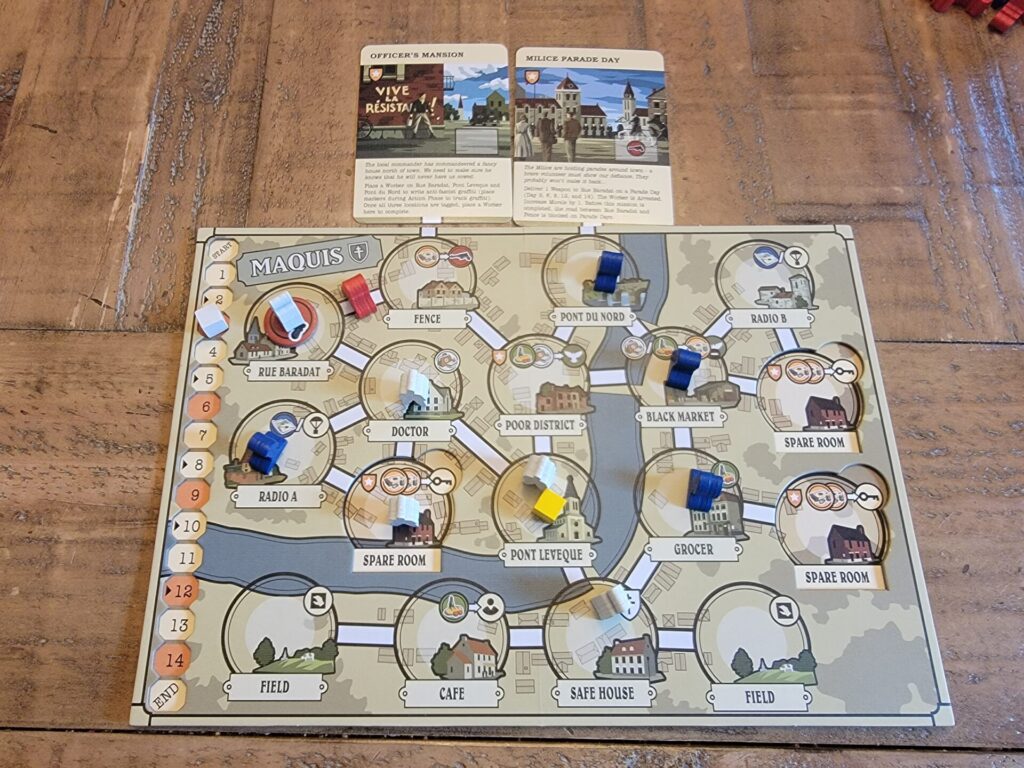
Maquis is designed in a way to make setup a breeze. This is a wonderful aspect of the game, as a lot of the missions are fairly tough, and I found myself failing more than I was succeeding. With re-setting the board only taking seconds, I was always eager to try again if I doomed my workers to failure.
Each game, you will choose two Mission Cards to work on. These cards are sectioned into different difficulty levels (using a Star system) and players can mix-and-match as they choose. The majority of these cards will actually act as additional locations on the map, so they are placed at the top of the board, ensuring their path icon connects to the pathway on the board. Mission Cards vary in their tasks but are all thematically sound and fun to attempt. Sometimes you might have to get a worker to visit a card location multiple times, bringing resources in a certain order. Other times, the card instructs you to gather certain Weapons or Explosives, and then visit varying locations around the board to destroy enemy strongholds.
Once the missions are selected, you will take your five workers, placing three of them at the Safe House location, and the other two near the Café location. These two are not active at the beginning of the game, but can be recruited during gameplay. You can make a pile of the other meeples, place the three different cubes onto their three different tracks (Turn Track, Morale Track, and Soldier Track) and then lastly, shuffle the 10 cards that make up the Patrol Deck. This will be the deck that controls the movement of the blue meeples, otherwise known as the Milice.
Gameplay

A game of Maquis is played over a course of rounds, also known as Days. A player has a maximum of 15 Days to meet both Mission Card objectives. So, what’s stopping you from beating back the Nazi sympathizers, or even the Nazi soldiers themselves? A few conditions, when met, trigger an instant game loss. The first is if you reach the end of Day 15 and you have not completed both missions. The second loss condition comes in the form of the Morale Tracker. This tracker will effectively decrease as the Days wind down, though there are ways to force the morale to move in a positive manner. If the Morale Tracker ever reaches the bottom of the tracker, you instantly lose. Lastly, if all of your active workers are arrested, the game is lost as well.
Each Day is played over three phases. The first phase, considered the Placement Phase, is where you’ll take turns placing your workers on locations as well as staging the Milice on other locations, based on the draw of the Patrol Deck. On first read of this, or even first playthrough, you might try to treat this like a normal worker placement game but it holds a tricky depth to it, but let’s wait till we get to the Action Phase to discuss that angle. After you place one of your workers from your Safe House, you will draw the top Patrol Deck card and look at the first location listed. If this location is empty, then you will place an enemy blue meeple there. If the location is occupied, you will work down the list to the second location, doing the same check. Repeat for the third location, if the second is also occupied.

If all locations are occupied, you start back with the top location, and you work your way through them again, but this time, the enemy is going to arrest the first of your workers it comes in contact with. When arrested, that worker is removed from the game forever. Each Day might bring different amounts of Milice, as at the beginning of the Placement Phase, you will compare the red number on the current Morale Tracker space with the amount of active workers you have. Whichever number is higher, that is how many blue meeples you’ll end up placing. I like this small thematic piece as “morale” suffers as there are more enemies patrolling the streets. Once all of your workers and all the blue meeples are placed, it is time to go to the Action Phase.
In this phase, you will activate each location. Most of the locations contain an icon for a certain type of resource that the location will generate. If you have a worker at the Doctor location, activating this location allows you to give that worker a single Medicine resource. Other locations allow you to trade in Food or Medicine for a boost in Morale, or even for Money but a loss of Morale (at the location named Black Market.) Two of the more creative locations include the spaces for Air Drops as well as the Spare Room locations. Triggering an Air Drop, allows you to parachute in a choice of different resources, placing them on one of the empty Field locations. On a future turn, you can send a worker to the Field to secure these resources. The Spare Room locations are recessed slots in the board where you can place a worker, pay two Money resources, and then select one of the nine Spare Room Tiles to place. These rooms give you alternate methods of gaining resources or even opens up resources not found on the standard board, like Explosives or False ID Papers. This is one of the coolest parts of the game as you have the ability to change the board from game to game to meet your new objectives.
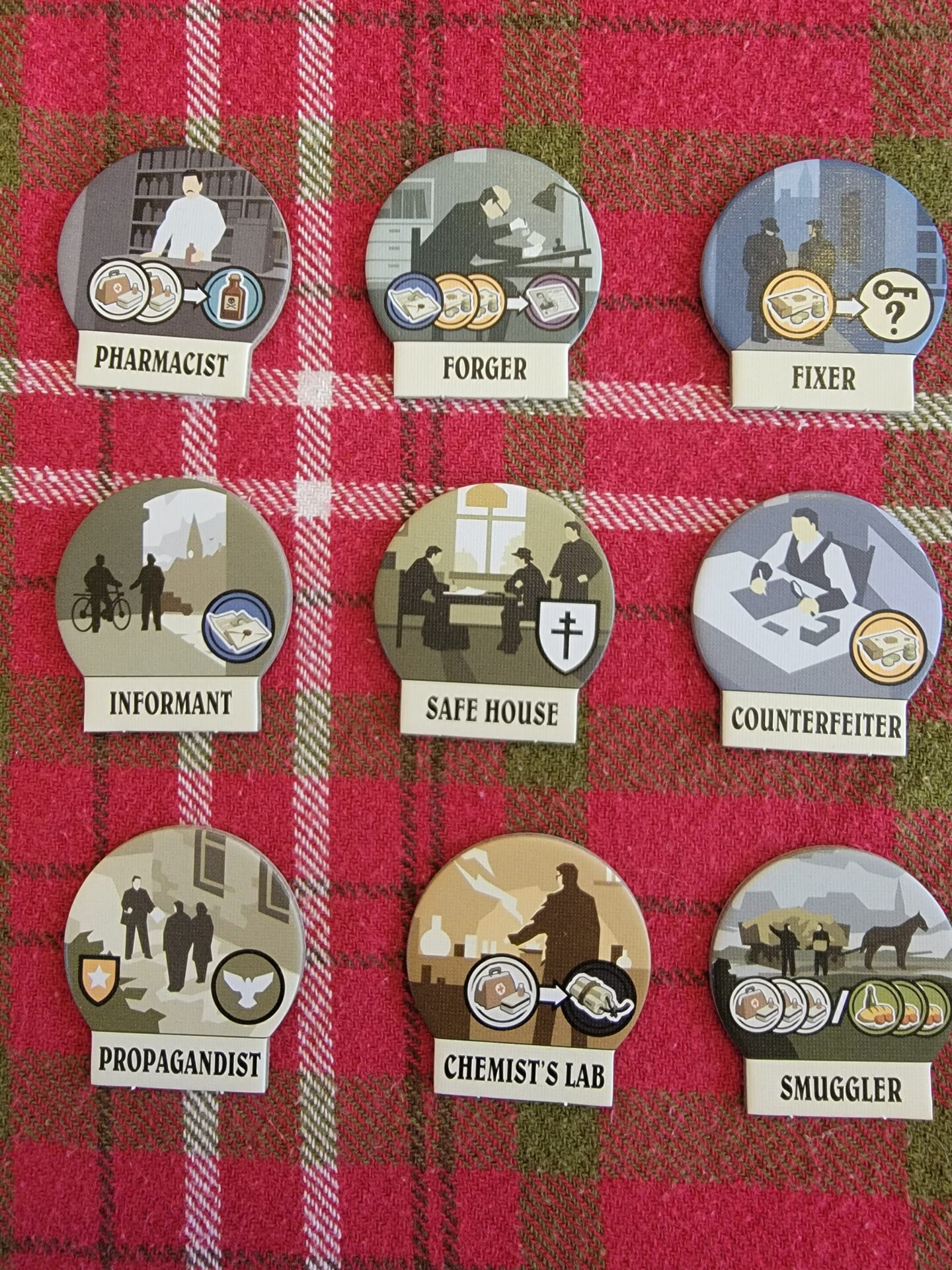
After all locations are triggered, the Action Phase ends with the “twist” that I alluded to when discussing the Placement Phase. In order to be able to use your workers on future rounds, they have to be able to make it back to the Safe House and they do this by being able to trace a clear line from their location to the Safe House, without being blocked by any Milice or Nazi Soldiers. This mechanism took me a while to fully grasp, as I was used to concentrating on what locations I need to put workers in, based on experiences from other worker placement games. Realizing that I had to “secure” an exit, by placing workers in a chain-like path, was a new concept for me. This is made harder by the fact that there are only two exits back to the Safe House, so you better make sure one of them is secured. If a worker can’t make it back to the Safe House, there are two ways to save him. If you have a Weapon resource token, you can discard it to shoot and kill the Milice. You’re only allowed to do this once a turn and once you’ve done it, a whole host of other problems arise. First, a red Nazi meeple is going to replace that Milice from here on out and these red meeples can never be persuaded out of arresting you. Additionally, your morale takes a slight hit once this action takes place. The other way to mitigate getting arrested is less detrimental, but you will have had to obtain a False ID resource and you simply discard it to bypass the blue meeple. These ID’s take quite a bit to obtain so it is not as near as easy as it might sound.
Once all workers, or at least the ones not arrested, are back at the Safe House, the Upkeep Phase starts. This phase is quick and mostly consists of the player moving cubes on the necessary trackers in order to ready the next Day. All three phases are fairly seamless and there is a natural flow from one to the other. I thoroughly enjoyed how you only really have to control the opponent during the first phase and that it is pretty mindless. Some games with solo variants, have you spending entirely too much time handling the AI player and this can really take away from the fun of focusing on what you’re trying to accomplish.
Conclusion

Never having heard of Maquis, I came into this experience having zero expectations but I assure you that the designer has packed a ton of depth into this small footprint of a game. The theme abounds in almost every decision and turn, keeping you on the edge of your seat the entire time. I think that the rulebook could have been clearer on a lot of points, but “house-ruling” these certain things and just making sure I played them consistently didn’t hinder my enjoyment of the game. I do wish there would have been some sort of “campaign” or “story mode” where the missions were laid out in a specific order to build out a story, as that would have only built on the thematic flourishes. If you are a solo gamer, or if you like worker placements and wondering if a solo game is for you, Maquis might just be that title you need to add to your library.
Rating
Ratings are based on 5 main criteria: rulebook, setup, components, art & graphic design, and gameplay. The first 4 criteria are rated 1 to 5 and the gameplay is rated 1 to 10. These scores culminate in an “overall satisfaction” score that is rated from 1 to 10. If the reviewed game has both a solo and multiplayer mode, I have assigned scores separately to give context to which mode we enjoy more.
Links
As an Amazon Associate I earn from qualifying purchases.
Amazon: Maquis Board Game
